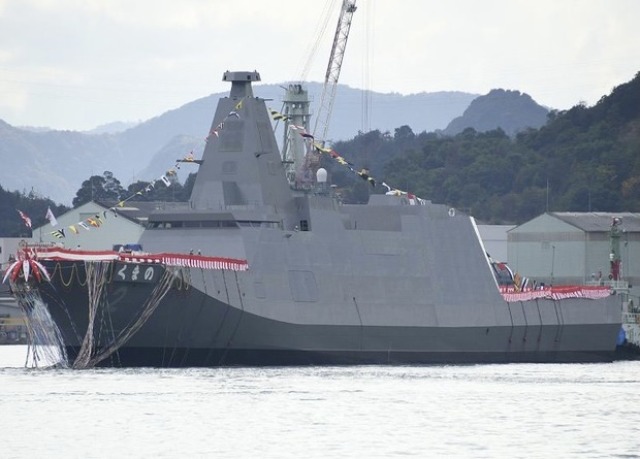The Japanese surface robot developed by Japan Marine United has been put to the test. According to Naval News, it will be placed on a new generation frigate of the Mogami class. The device will work in tandem with the OZZ-5 underwater robot and neutralize mines.
The 30FFM project for the construction of a new generation of multi-purpose Mogami-class frigates to replace the Asagiri-class destroyers was launched in 2017. The new ships are being developed by Mitsubishi Heavy Industries and Mitsui E&S. They have already launched three frigates - "Kumano", "Mogami" and "Noshiro" . In total, the Japanese Maritime Self-Defense Forces want to receive 22 such ships.
The standard displacement of the Mogami-class frigates is 3,900 tons, the length is 130 meters, and the width is 16 meters. Their speed can exceed 30 knots. The ships are designed for 90 crew members.
Robots, for example, the underwater OZZ-5, will be based on the frigates of the 30FFM project . This device is four meters long and 0.5 meters wide and is equipped with a sonar that allows it to identify and classify mines. It can reach speeds of up to seven knots and work for up to nine hours.
The surface robot developed by Japan Marine United, which has recently been tested, will also be placed on new-generation frigates. It will work together with OZZ-5. The surface robot will receive data from the OZZ-5 sonar in real time and relay them to the frigate. In case of detection of mines, he will be able to undertake operations to neutralize them.
The Japan Maritime Self-Defense Forces will not receive Japan Marine United surface robots along with frigates, unlike the OZZ-5 submarines. But their purchase is provided for by the defense budget for the next year.
The Japanese are also creating other robots to search for and neutralize sea mines. Earlier, we wrote about the IHI robotic complex for detecting them. It consists of a pair of robots, one of which searches for mines under water, and the second serves as a repeater.
Vasilisa Chernyavtseva

